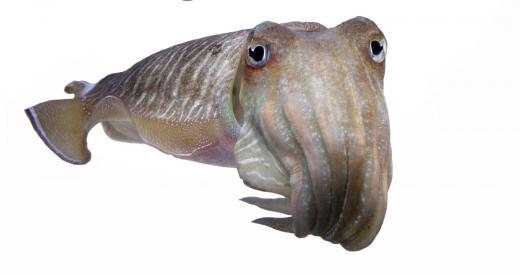What is a Coelacanth?
 Michael Anissimov
Michael Anissimov
The coelacanth is a lobe-finned fish, similar in form to the ancestor of all terrestrial vertebrates. It was a coelacanth-like fish that originally evolved legs and began to walk on land 360 million years ago. Coelacanths were presumed to be extinct for at least 100 million years, only being found in the form of fossils, until a living specimen was found near the Comoros Islands, off the east coast of Africa in 1938, causing an international sensation. The word to describe an group that was presumed extinct but was subsequently discovered alive is "Lazarus taxon."
The coelacanth is a large fish, weighing an average of 176 lb. (80 kg) and measuring as long as 6.5 ft. (2 m). By examining their ear bones, scientists know that coelocanths are long-lived — with some living as long as 80 to 100 years. There is an African species, which is deep blue in color to help it camouflage, and an Indonesian species, which is brown. Coelacanths have extremely sensitive eyes and only go out to hunt at night. The rest of the day, they rest deeply in the water column, dwelling at depths of up to 2,300 ft. (700 m) underwater, although they usually stay at about 295 to 656 feet (90 to 200 m).

Coelacanths are opportunistic and flexible feeders, hunting snipe eels, cuttlefish, squid, small sharks, and other fish. Part of their evolutionary success stems from their ability to descend to pitch black depths and suspend their metabolisms at will, going into a hibernation of sorts. It is thought that the coelacanth have existed in more or less its present form for 100 million years. The closest living relative of the coelacanth is the Australian lungfish, which was previously the fish thought to be most closely related to the ancestor of all tetrapods.

Coelacanths are thought to be representatives of the oldest living lineage of jawed animals. More primitive fish are thought to be extinct. Because of their prehistoric look and rarity, coelacanths are symbolic of ancient life. Only a few hundred have ever been caught, and they are considered to be a critically endangered species.
AS FEATURED ON:
AS FEATURED ON:












Discuss this Article
Post your comments